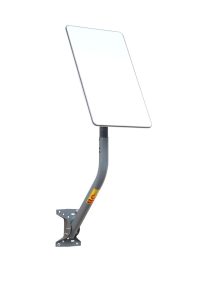MEO Satellites: Revolutionizing Global Communication with Medium Earth Orbit Technology
MEO satellites, or Medium Earth Orbit satellites, are a type of satellite that operates in an orbit between 2,000 and 36,000 kilometers above the Earth’s surface. This orbit is higher than Low Earth Orbit (LEO) satellites but lower than Geostationary Orbit (GEO) satellites. MEO satellites are designed to provide global coverage and are used for a variety of applications, including navigation, communication, and Earth observation.
The focus of this article is on MEO satellites and their role in revolutionizing global communication. With the increasing demand for faster and more reliable connectivity, MEO satellites have become an essential part of modern telecommunications. They offer a unique combination of wide coverage, high capacity, and low latency, making them an attractive option for a range of applications, from mobile broadband to IoT connectivity.
How MEO Satellites Work
MEO satellites work by transmitting and receiving signals to and from Earth-based stations. They are equipped with transponders, which are devices that receive and retransmit signals. The signals are transmitted to the satellite on a specific frequency and are then retransmitted back to Earth on a different frequency. This process allows for the transmission of data, voice, and video signals over long distances.
MEO satellites have several advantages over traditional GEO satellites. They have a lower latency, which means that the time it takes for a signal to travel from the Earth to the satellite and back is shorter. This makes them more suitable for real-time applications such as video conferencing and online gaming. They also have a wider coverage area, which means that they can provide connectivity to a larger number of users.
Applications of MEO Satellites
MEO satellites have a range of applications, including navigation, communication, and Earth observation. They are used in satellite navigation systems such as GPS and Galileo, which provide location information to users around the world. They are also used in mobile broadband networks, providing connectivity to remote and underserved areas. Additionally, they are used in IoT applications, such as smart cities and industrial automation.
MEO satellites are also used in Earth observation applications, such as weather forecasting and environmental monitoring. They can provide high-resolution images of the Earth’s surface, which can be used to monitor climate change, track natural disasters, and manage natural resources.
Benefits and Challenges of MEO Satellites
MEO satellites have several benefits, including faster and more reliable connectivity, wider coverage, and lower latency. They also have a lower cost per bit than traditional GEO satellites, making them a more cost-effective option for many applications.
However, MEO satellites also have some challenges. They require more complex systems and infrastructure than traditional GEO satellites, which can increase their cost and complexity. They also have a higher risk of interference from other satellites and terrestrial systems, which can affect their performance and reliability.
In conclusion, MEO satellites are a revolutionary technology that is transforming the way we communicate globally. With their faster and more reliable connectivity, wider coverage, and lower latency, they are an essential part of modern telecommunications. While they have some challenges, their benefits make them a valuable asset for a range of applications, from mobile broadband to IoT connectivity.
As the demand for faster and more reliable connectivity continues to grow, the importance of MEO satellites will only continue to increase. They will play a critical role in enabling the next generation of telecommunications, from 5G networks to satellite-based IoT applications. With their unique combination of wide coverage, high capacity, and low latency, MEO satellites are poised to revolutionize the way we communicate and interact with each other.


